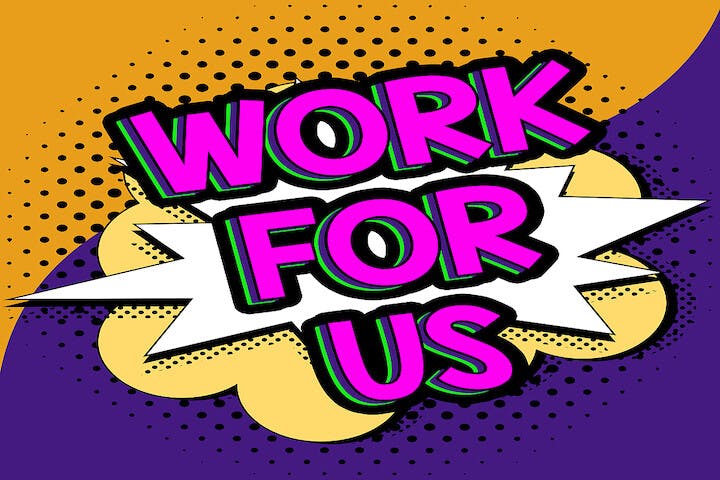When leaders talk about their company’s ‘culture’, experience (sadly), tells me that I’m much more likely to hear cliched and vacuous phrases than those with any revelatory insights.
Expressions like “work hard, play hard,” or “we’re like a family,” are tediously commonplace.
So are phrases like: “we value work-life balance,” or (sharp intake of breath), “our employees are our greatest asset.”
To be honest though, these lazy description are now so overused and trite so as to be rendered completely meaningless.
Job ads often tell much more
The same accusations are often leveled at job ads – which liberally pepper-in similar style-over-substance platitudes to grab readers’ attention.
But…as meticulously edited and thoroughly reviewed as corporate job ads tend to be, I also find that when you do read a company’s job ads, there are actually lots of clues present as to the essential features of an organization’s culture. These clues often sneak through the editing process.
Types of cultures, and how they often get reflected in ads
As we know from the online test, What’s Your Organizational Culture?, there are four primary corporate cultures.
Typically, they tend to encourage ads with a particular language.
Let’s drill-down into what I mean by this:
1) The Social culture
This culture in a nutshell: The Social culture employer prefers strong interpersonal relationships, collaboration, and values having a friendly atmosphere. Employees are trusted and empowered, leading to a sense of belonging and loyalty.
Job ad clues that give it away: In job ads for social cultures, you might expect to find phrases like “collaborative work environment,” suggesting the organization values teamwork and cooperative problem-solving among employees. “Strong emphasis on work-life balance” can imply that the company cares about its employees’ wellbeing and encourages a healthy balance between professional and personal life. Words like “community involvement and social responsibility” can indicate that the company is engaged in its local community and takes its social impact seriously.
2) The Dependable culture
This culture in a nutshell: The Dependable culture prioritizes stability, efficiency, and adherence to established processes. Employees are expected to follow protocols, ensuring consistent quality and performance.
Job ad clues that give it away: In a dependable culture, job ads might contain phrases like “Process-driven organization,” suggesting the company focuses on efficient and well-established processes to achieve its goals. “Attention to detail and accuracy” hints that the organization values precision and thoroughness in employees’ work. Words like: “compliance with regulations and guidelines” denote the seriousness with which the company adheres to external rules and regulations.
3) The Enterprising culture
This culture in a nutshell: The Enterprising culture values innovation, creativity, and merit-based competition. Employees are encouraged to think outside the box and challenge the status quo.
Job ad clues that give it away: With an enterprising culture words typically used include “Innovative and forward-thinking company,” which often indicates that the organization values creative solutions and staying ahead of industry trends. Having a “high-growth environment” suggests the company is expanding, which often requires employees to adapt and contribute to its evolution. Of course, phrases like “entrepreneurial mindset” imply that employees are encouraged to take initiative, think creatively, and act as if they are running their own business within the company.
4) The Hierarchical culture
This culture in a nutshell: The hierarchical culture is characterized by a clear organizational structure with well-defined roles and responsibilities. Power and authority are important, and employees compete for promotions and recognition.
Job ad clues that give it away: In hierarchical cultures, one might find phrases like “structured and well-defined roles,” which suggests the organization has a clear chain of command and distinct responsibilities for each position. “Centralized decision-making” can signify decisions are made primarily by those ‘higher-up’, while employees have limited autonomy in their work. The words “clear career progression” can demonstrate that promotions and advancements within the company are based on a structured path, and employees are aware of the steps required to move up the ladder.
Match your words to your culture
The point of sharing these phrases is to remind HRDs that they really do need to read their company’s job ads; to look out for the clues they’re sharing about their company’s culture.
In the worst-case scenario, you might find that your recruitment pitches indicate a corporate culture at odds with what you know to be true about your company. In those cases, a serious rewrite of your job ads is in order.
More commonly, you’ll find an opportunity to signal your company’s culture.
If you’ve got an enterprising culture, for example, don’t shy away from telling candidates about your workplace.
Job ads that accurately reflect the organization’s culture will attract candidates who align with the company’s values, work style, and expectations, and that will only increase the likelihood of finding employees who will thrive in your company.
Authenticity is a big buzzword these days, so it’s better to clearly express who you really are than to pretend to be something you’re not – even if the thing you’re not sounds better than what you are.
Each of those cultures are equally fine, so long as you’re hiring people that can survive and thrive within your particular culture.
There will doubtless be people who prefer each of the four types of corporate cultures. But the more your job ads reflect who you really are, the better your odds of hiring people who will truly fit.
